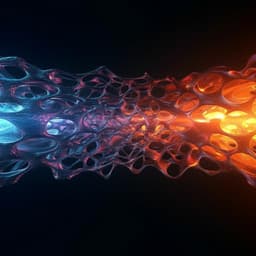
Physics
Electronic response of a Mott insulator at a current-induced insulator-to-metal transition
C. T. Suen, I. Marković, et al.
The study delves into the fascinating insulator-to-metal transition of Ca₂RuO₄ induced by d.c. current, conducted by the research team led by C. T. Suen and others. Utilizing transport-ARPES, they reveal a pronounced reduction of the Mott gap and significant modifications in Ru band dispersion, emphasizing the unique phase transition dynamics between lattice structures and electronic responses.
~3 min • Beginner • English
Related Publications
Explore these studies to deepen your understanding of the subject.







